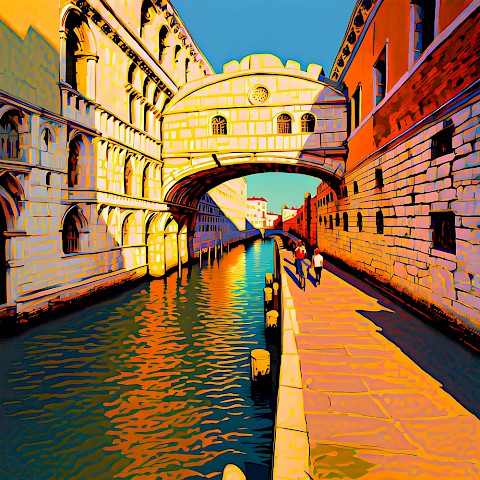|
09 IX 2025 |
15. Venice 1833-45
529 - Bridge of Sighs, Ducal Palace and Custom-House, Venice: Canaletto Painting | |

| ||
|
The title shows that this was in part a tribute to the most renowned painters of Venetian vedute. Canaletto himself is shown painting away at a picture in a heavy gilt frame on the left, although Turner, of all artists, would have been aware of the unlikelihood of such an event. The picture may also, as Graham Reynolds has suggested (I969, Pp.158-60), have been in part inspired by the Venetian scenes of Bonington, whose death in 1828 had been followed by a large sale of his works in London in 1829. But the immediate cause seems to have been friendly rivalry with one of his followers, William Clarkson Stanfield (I793-1867), who exhibited Venice from the Dogana' the same year. According to the Morning Chronicle for 6 June 1833 Turner did his picture, 'it is said, in two or three days, on hearing that Mr. Stanfield was employed on a similar subject - not in the way of rivalry of course, for he is the last to admit anything of the kind, but generously, we will suppose, to give him a lesson in atmosphere and poetry. The same story was repeated by Allan Cunningham and Arnold's Magazine for November 1833-April 1834. Stanfield's picture was, in fact, bought by his patron Lord Lansdowne, who had an important collection of Bonington's works, so the two possible causes for Turner's taking up Venetian subjects would have been interrelated. The critics readily accepted Turner as the winner in this contest. For Arnold's Magazine 'the juxtaposition brought out more glaringly the defects of Stanfield, and illustrated more strongly the fine powers of Turner. For, viewed from whatever distance, Turner's work displayed a brilliancy, breadth, and power, killing every other work in the exhibition', though an anecdote by George Jones, whose 'Ghent' hung next to the Turner, suggests that Jones won another contest that occurred at that exhibition. Turner first put down Jones' bright colours by increasing his own but Jones then added 'a great deal more white' to his sky, making the Turner look much too blue'. The Morning Chronicle went on with its review of the Turner to say that 'It is beautiful and replete in the greys on the left, &c, with his magical powers, so often disgraced in other pieces, and frittered away for pence in his little drawings. Here we have a continuing theme of later criticisms, which praised Turner's Venetian works while attacking his 'extravagances'. . The Athenaeum, II May, thought that Turner had worsted Canaletto as well, describing Turner's picture as 'more his own than he seems aware of: he imagines he has painted it in the Canaletti style: the style is his, and worth Canaletti's ten times over.' The picture was bought at the Academy by Robert Vernon, a typical example of the new manufacturing class from which many of Turner's later patrons were to come, as opposed to the aristocracy who bought his early works. Vernon, who had already bought a seapiece the previous year, was building up a collection of contemporary British painting which he gave to the National Gallery in 1847, by which time it included four Turners (see also No.532). An image generated by an AI Machine Learning Model Property of the artist. | ||
